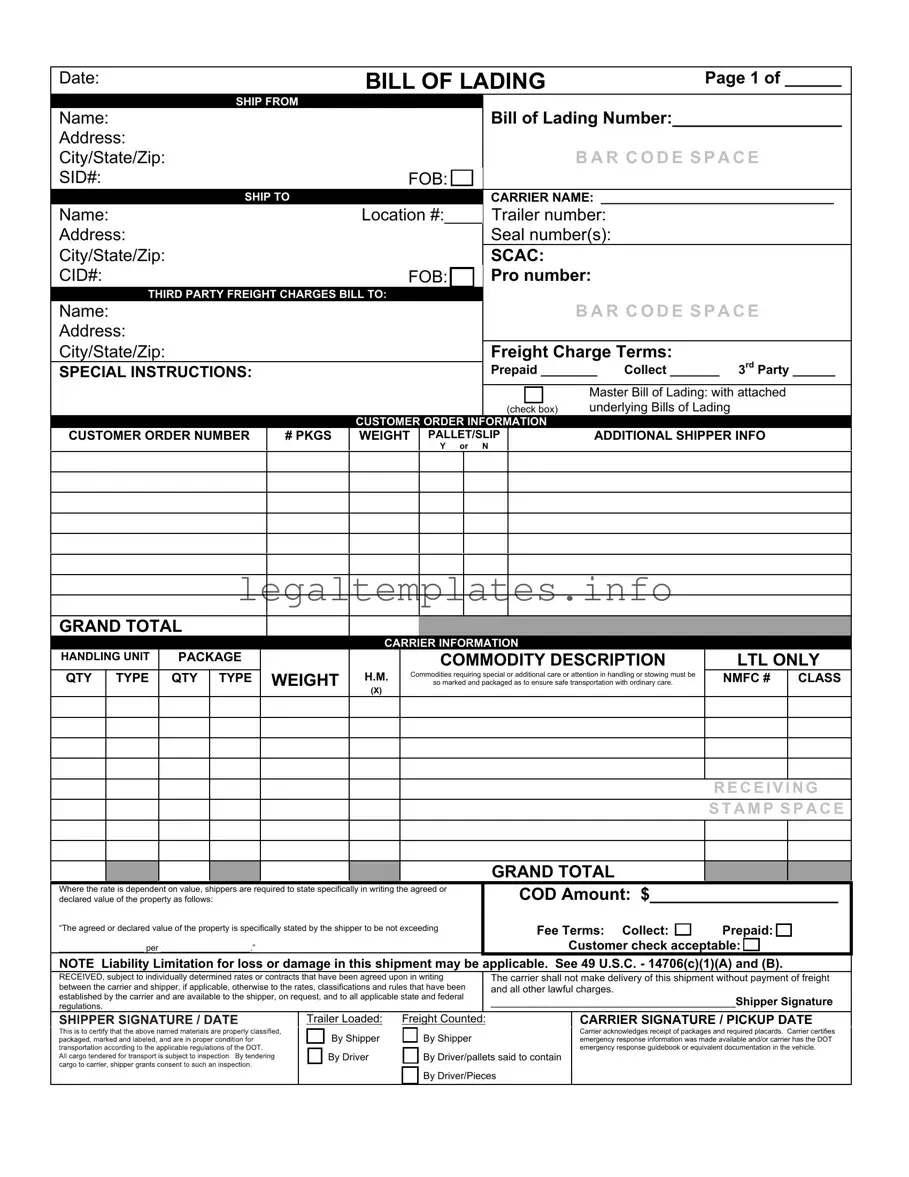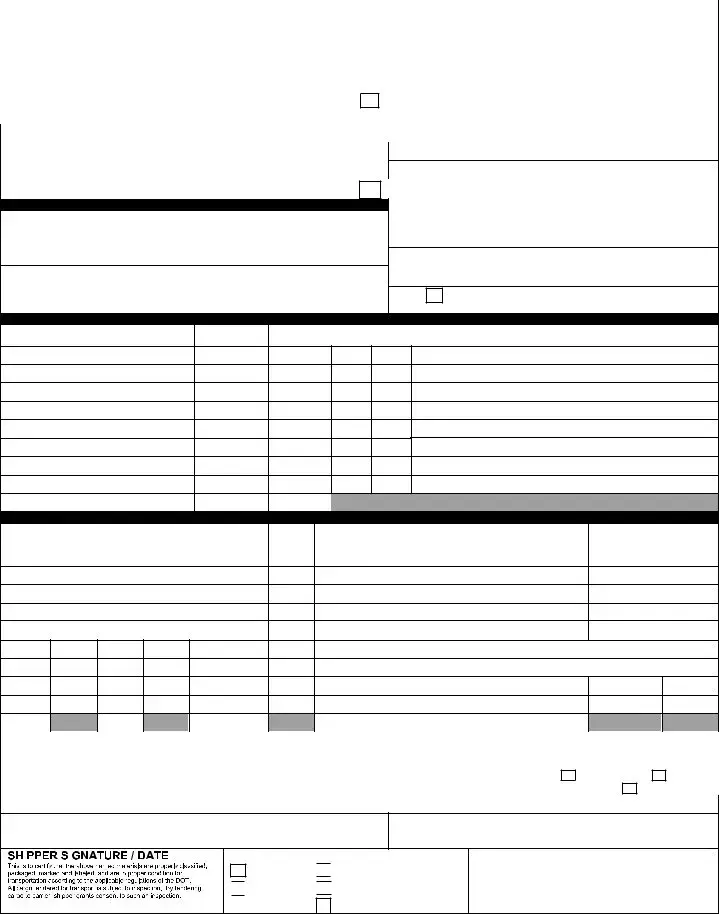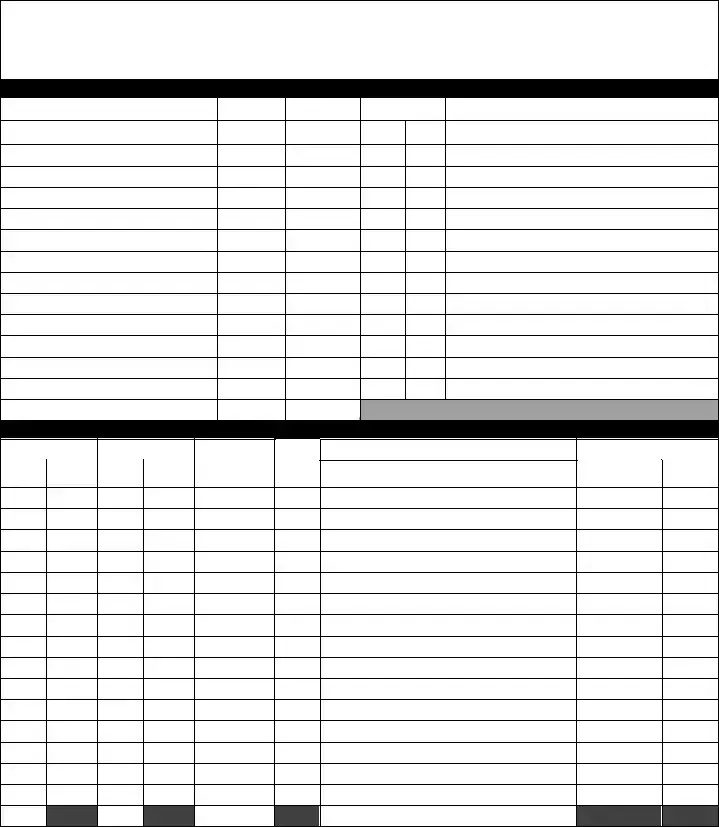What is a Bill of Lading with a Supplement form?
A Bill of Lading with a Supplement form is a crucial document used in the shipping industry. It serves as a contract between the party shipping the goods and the carrier transporting them. This document outlines the specifics of the shipment, including the types and quantities of goods being shipped, their destination, and the terms for their transportation. The supplement form attached provides additional space for any extra details that might not fit on the main Bill of Lading, ensuring all pertinent information is included and clearly stated.
Why is the Supplement form necessary?
The Supplement form becomes necessary when the details about the shipment are too extensive to fit on the standard Bill of Lading. This could be due to a large number of items being shipped, specific instructions related to the cargo, detailed descriptions of the goods, or special handling requirements. By including a Supplement form, shippers ensure that all essential information is communicated to the carrier, thereby minimizing misunderstandings and ensuring smooth transportation.
What information is typically included on the Supplement form?
Information on the Supplement form usually extends the data already provided on the main Bill of Lading. This can include, but is not limited to, additional descriptions of the goods being shipped, special instructions for handling, extra points of contact for pickup and delivery, and any other details relevant to the shipment's safe and efficient transport. The precise content will vary based on the shipment's specific needs and requirements.
How does the Bill of Lading with a Supplement form protect the parties involved?
This document ensures protection for all involved parties through clear communication. For the shipper, it offers proof that the carrier has received the goods as described, and for the carrier, it clarifies the terms of transport, including their liability and obligations. This clear delineation of responsibilities helps to prevent disputes, provides a legal record of the agreement, and, in case of any issues, serves as a critical piece of evidence in resolving claims.
Is the Bill of Lading with a Supplement form legally binding?
Yes, the Bill of Lading with a Supplement form is a legally binding document. Once signed by the representative of the shipping company and the carrier, it acts as a contract enforcing the terms agreed upon for the transportation of goods. This contractual nature makes it a powerful document in ensuring each party fulfills their obligations as stated, with legal implications for failure to comply.
Can digital versions of the Bill of Lading with a Supplement form be used?
Yes, digital versions of the Bill of Lading with a Supplement form are increasingly common and are recognized as valid in many jurisdictions. They offer the advantage of ease in distribution and storage. However, it's important to ensure that the digital process used for the Bill of Lading includes secure electronic signatures and is compliant with the legal standards in the countries of shipment origin and destination. This compliance helps maintain the document's legal validity across borders.


 to certify that the above named materials are properly classified, packaged, marked and labeled, and are in
to certify that the above named materials are properly classified, packaged, marked and labeled, and are in proper condition for transportation according to the applicable regulations of the DOT.
proper condition for transportation according to the applicable regulations of the DOT.
 By Shipper
By Shipper
 By Driver
By Driver 
 By Driver/pallets said to contain
By Driver/pallets said to contain